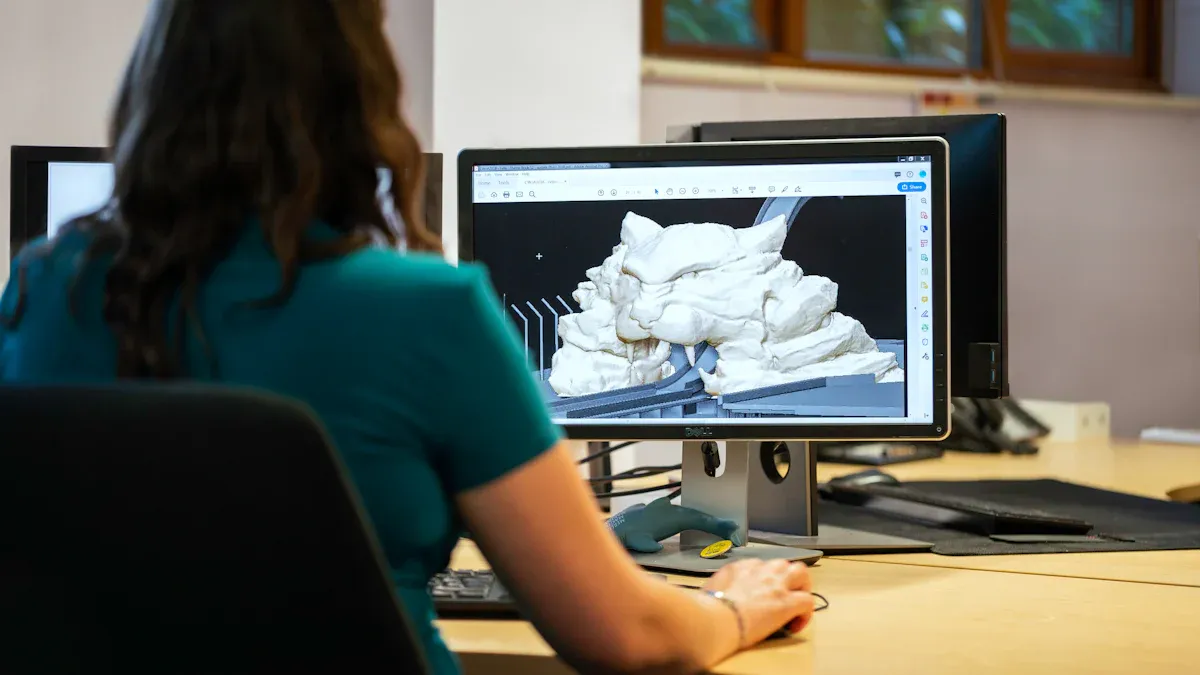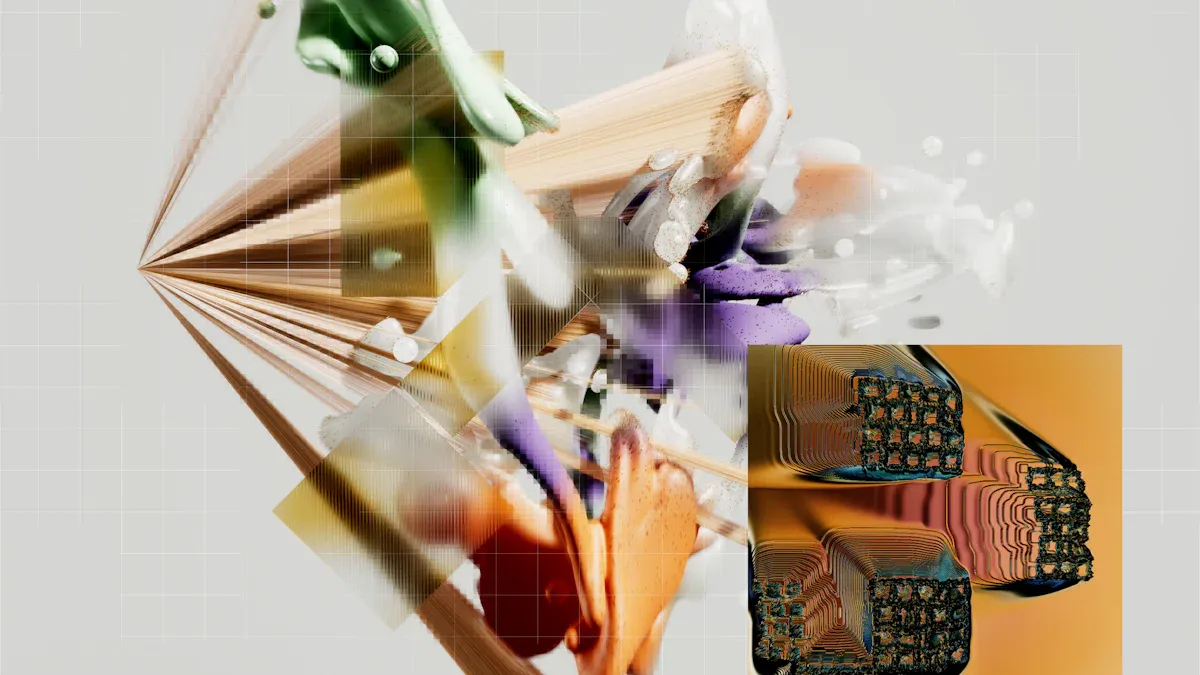How to Use Finite Element Analysis to Predict PET Tubing Shrinkage

Finite element analysis of PET tubing shrinkage allows you to understand how PET tubing changes shape when heated. This method shows how the material behaves at various temperatures and stages. For instance, PET tubing can shrink up to 50% in diameter if the ends are held fixed, and the length can reduce by 30% to 50% during heating. By using finite element analysis of PET tubing shrinkage, you avoid wasting material through trial and error and obtain more accurate results. This approach helps you make better design and manufacturing decisions.
Key Takeaways
Predicting PET tubing shrinkage helps stop problems. It makes sure the tubing fits and works after heating and cooling.
Using finite element analysis with good material data and detailed models helps predict shrinkage better. This also saves time and money.
Good mesh quality and the right boundary conditions are needed for good simulation results.
Always check your simulation results by comparing them to real tests. This helps make your model more correct.
Knowing and controlling steps like temperature, pressure, and cooling can lower shrinkage. It also makes the product better.
Why Predict Shrinkage?
Benefits for PET Tubing
It is important to predict shrinkage in PET tubing. This helps make sure the tubing meets size and quality rules. Shrinkage can change how the tubing looks and how big it is after cooling. If you do not predict shrinkage, problems can happen. The tubing might bend or have uneven walls. These problems can cause leaks or weak spots.
The type of material changes how much shrinkage happens. Different polymers have their own structures and cool in special ways.
The molding temperature affects how fast the tubing cools. It also changes how crystals grow inside the tubing.
How fast the tubing cools is important. Cooling too quickly can make shrinkage worse than slow cooling.
The mold’s design, like its thickness and shape, changes how heat leaves the tubing. This affects how evenly it cools.
Pressure during molding moves the material around. This changes how much the tubing shrinks.
The room’s humidity and temperature also change how the tubing cools and shrinks.
If you predict shrinkage well, you can stop problems like sink marks and warping. You can use this information to make better molds and set the right process steps. This helps you make PET tubing that works well and fits your needs.
Note: Shrinkage in PET tubing mostly depends on polymer composition, crystallinity, and processing steps. You can control these things to help the tubing keep its shape and work better.
Process Optimization
When you know how much shrinkage will happen, you can improve your injection molding process. You can set the best temperatures, pressures, and cooling times. This helps you get tubing with the right size and shape every time.
If you predict shrinkage well, you can:
Make less waste by making fewer mistakes.
Save time and money by not guessing what works.
Make products that are always the same and work well.
In injection molding, knowing how PET shrinks helps you design molds that fit the final part. You can also change your process to stop problems before they start. This means you can make PET tubing that is high quality and meets tough rules.
Finite Element Analysis of PET Tubing Shrinkage

Material Data
You need good material data before starting finite element analysis of PET tubing shrinkage. Find out the PET resin’s density, melting point, and crystallinity. Watch how the material acts at different temperatures. Near the glass transition temperature, PET goes from hard to soft. It becomes less stiff and more bendy. The shear modulus gets very low. The tubing can almost flow like a liquid. This change affects how much the tubing shrinks when heated. You should also check how the material stretches and squeezes in different directions. PET can act differently along its length and around its sides.
Tip: Use dynamic mechanical analysis (DMA) and digital image correlation (DIC) to see how PET changes with heat and force. These tests help you learn about Poisson’s ratio and stiffness. This is important for good shrinkage predictions.
Geometry Modeling
Next, make a digital model of your PET tubing. Use the real size, wall thickness, diameter, and length. If your tubing has special shapes like flares or tapers, add them too. The more exact your model, the better your results will be. Many engineers use CAD software to build these models. Then they use them in finite element analysis of PET tubing shrinkage.
Boundary Conditions
Set up boundary conditions to match your real process. Decide which parts of the tubing stay still and which can move. For example, you might hold the ends and heat the middle. Set the temperatures for each part of the tubing and the air around it. These choices change how the tubing shrinks and where stress builds up.
Material Properties
Add temperature-dependent and viscoelastic material properties to your simulation. PET’s properties change a lot near the glass transition temperature. The amorphous part gets soft, and the crystalline part matters more. You must include these changes in your model. Use the three-dimensional viscoelastic generalized Hooke’s law to show how PET stretches and squeezes at different temperatures. Remember, Poisson’s ratio can reach about 0.5 in the glass transition area. This means the tubing gets much more flexible. If you skip these details, your predictions will not match real shrinkage.
Meshing
Break your model into small pieces using a mesh. The mesh helps the software see how each part of the tubing reacts to heat and force. For PET tubing, use a fine mesh where you expect high stress or big shape changes. Pick element types that work well with thin, round shapes. Good mesh quality helps you get correct results without slowing down the simulation.
Note: Mesh quality and element type are very important for PET tubing. Bad mesh choices can cause mistakes or miss details in shrinkage patterns.
Simulation Run
Now, run your simulation. Use a coupled thermal-mechanical analysis to see how heat and force work together. This analysis solves temperature and movement at the same time. When PET heats up, it grows and then shrinks as it cools. The tubing’s shape changes because of both heat and force. Coupled analysis gives you a better idea of how the tubing will act during real heating and cooling. If you only look at heat or force alone, you might miss important things.
Results Interpretation
After the simulation, check if your results make sense. Follow these steps to understand your findings: 1. Work with a team that knows about materials, tools, and part design. 2. Compare your simulation results with real measurements from tests or molded parts. 3. Make sure you used the right sizes, shrinkage rates, and material data. 4. Share your results with everyone, so they can use the suggested process settings. 5. Remember that simulation software has limits. Some problems, like filling balance or surface defects, may need extra checks. 6. Use advice from design, material, and processing experts to understand the results. 7. After making real parts, compare their shrinkage to your predictions. Change your model if needed.
You should also check your finite element analysis of PET tubing shrinkage by comparing simulated and real stress-strain curves at different temperatures. Measure how the tubing changes size during drawing and shrinking. Use tools like X-ray scattering or infrared spectroscopy to check molecular orientation and crystallinity. These steps help you make sure your model matches real behavior.
Checklist:
Use industry rules like ISO 10303 and ASME V&V for reporting and checking.
Write down your geometry, mesh, material models, and simulation settings.
Make your process clear and easy for others to repeat.
By following these steps, you can trust your finite element analysis of PET tubing shrinkage. You will predict shrinkage better and improve your tubing design and manufacturing process.
Accuracy Tips
Model Reliability
You want your finite element model to give results you can trust. To do this, you need to follow some important steps.
Split your PET tubing into many small pieces. This helps you see how each part changes shape.
Use advanced material models. These models, like viscoelastic or poroelastic, show how PET tubing acts over time and at different temperatures.
Run tests that watch changes over time. These tests let you see how shrinkage changes as time goes on, not just right after heating.
Mix real shrinkage data with your model. This makes your predictions closer to what really happens.
Always check your results with real experiments. If your model matches what you see in the lab, you know your analysis is working well.
Researchers found that using the right material models and checking with real tests helps you predict shrinkage very well. This works for PET tubing and other things, like concrete. You should always test your model with real data to make sure it works.
Common Mistakes
Many people make the same mistakes when they use finite element models for PET tubing shrinkage.
Some forget to use material properties that change with temperature. PET changes a lot near its glass transition temperature.
Others use a mesh that is too big. This can miss important details in the tubing’s shape.
Some skip checking their model with real experiments. This can lead to wrong results.
People sometimes use the wrong boundary conditions. If you do not match the real process, your model will not show true shrinkage.
Some ignore time effects. Shrinkage can keep changing after the tubing cools.
Tip: Always double-check your material data, mesh, and boundary conditions. Test your model with real parts whenever you can. This helps you avoid mistakes and get results you can trust.
Challenges and Solutions

Modeling Issues
When you use finite element analysis for PET tubing shrinkage, you face some problems.
Volumetric contraction happens as the resin cures. This can make the tubing smaller than you think.
Cooling rates are not always even in the tubing or mold. Some spots cool faster, which causes uneven shrinkage.
These changes can make the tubing thinner and smaller. You might see problems with how parts fit or find weak spots.
Residual stresses build up inside the tubing. These stresses can make the tubing bend or crack later.
PET does not act the same in every direction. This anisotropic behavior makes shrinkage hard to predict.
Complex shapes and multiphysics problems make the computer work harder. Your simulation might take a long time to finish.
Tip: You can lower shrinkage by picking low-shrinkage resin, controlling the cooling cycle, and designing your mold to allow for shrinkage. Adding fibers with the right thermal expansion can also help.
Troubleshooting
You can fix many modeling problems by using good methods.
Change the glass-rubber model to better match how PET acts. This helps you guess shrinkage more correctly.
Add virtual parts, like a stretch rod or cap, to your model. These parts copy what happens during real forming and help your results.
Use several Maxwell networks in your model. This lets you see how PET relaxes over time, not just during quick changes.
Calibrate your material data for tubes, not just sheets. Tubes and sheets act differently because of how they are made.
Try explicit finite element analysis with custom subroutines. This lets you include temperature and strain-rate effects in your simulation.
Make your model simpler by leaving out pre-stretched ends or using smaller moves. This can make your simulation more stable and real.
You should always check your simulation results with real tests. This helps you find mistakes and make your model better. In injection molding, these steps help you make PET tubing that works well and avoids common problems.
You can get good results with finite element analysis of PET tubing shrinkage if you follow some important steps. First, use the best material data that has measured shrinkage and mechanical properties. This helps you trust your results and makes your predictions more exact. Build your model with care and always compare your results to real tests. FEA lets you see shrinkage in all parts of the tubing, so you can make your process better. Keep learning new things and update your methods to get the best results.
FAQ
What is the most important material property for PET shrinkage prediction?
You should look at viscoelastic properties that change with temperature. These properties change a lot near the glass transition temperature. If you have good data here, you can predict shrinkage much better.
How do you check if your FEA results are correct?
You need to compare your simulation results to real test data. Measure shrinkage on real PET tubing. If the results are close, your model is working well.
Can you use FEA for different PET tubing shapes?
Yes, you can use FEA for many shapes. You just need to make the right shape in your CAD software. Adding more details helps you get better results.
Why does mesh quality matter in FEA?
Mesh quality changes how well your simulation shows stress and shrinkage. A fine mesh in important spots gives you more accurate results. If the mesh is poor, you might miss important changes.
What tools help you measure PET shrinkage in real life?
You can use digital calipers, optical scanners, or digital image correlation (DIC). These tools help you see how much the tubing shrinks after heating and cooling.
See Also
A Clear Guide To FEP Tubing Shrink Ratio 1.3:1
Key Considerations For Selecting The Right FEP Shrink Tubing
How To Pick The Perfect Heat Shrink Tubing Size Easily
Simple Explanation Of Autoclavable FEP Heat Shrink Tubing
Selecting The Best Ultra-Thin PET Heat Shrink Tubing For Projects

